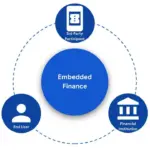Money isn’t just about numbers—it’s about behavior, emotion, and perception. While financial decisions may seem logical on the surface, they’re often shaped by deeper psychological forces. Understanding why we spend, save, or invest the way we do can help us build healthier financial habits and achieve long-term stability.
Money and Emotion: The Hidden Connection
Our relationship with money is rarely purely rational. Emotions like happiness, fear, guilt, and pride all influence our financial behavior. For example:
- Happiness: We often spend to feel good or reward ourselves after a tough day—this is known as emotional spending.
- Fear: Some people hoard money out of anxiety about the future, leading to excessive saving and missed investment opportunities.
- Guilt: Spending on ourselves after giving to others can create guilt, while others overspend to seek validation or approval.
In short, money is not just a tool—it’s a mirror reflecting our values, fears, and desires.
The Role of Upbringing and Environment
How we handle money is often shaped by what we observed growing up. If your parents were cautious savers, you may naturally avoid risk. If they struggled with debt, you might fear borrowing—or repeat the same habits unconsciously.
Culture also plays a big role. In some societies, success is measured by material wealth, pushing people to spend on status symbols rather than essentials. In others, modest living and saving are more valued.
Recognizing these influences helps us understand that financial behavior isn’t just personal—it’s deeply social and learned.
Cognitive Biases That Influence Spending
Our brains take shortcuts when making financial decisions, and these “mental biases” can lead us astray. Some common examples include:
- The Anchoring Effect – We tend to rely too heavily on the first number we see. For instance, if an item is marked “50% off,” we perceive it as a great deal even if it’s still overpriced.
- The Present Bias – We prioritize instant gratification over long-term rewards. This is why saving for retirement feels less urgent than buying a new gadget today.
- The Herd Mentality – We mimic others’ financial behavior—investing in trends or buying what’s popular—because it feels safe to follow the crowd.
- Loss Aversion – The fear of losing money often outweighs the excitement of gaining it, which can make people avoid investing altogether.
By recognizing these biases, we can make more deliberate and informed financial choices.
Spending and Identity: “We Buy Who We Are”
Modern consumer culture encourages us to see spending as self-expression. People don’t just buy products—they buy identities. A luxury car might represent success, while sustainable brands reflect values like environmental responsibility.
Social media intensifies this effect by showcasing curated lifestyles that trigger comparison spending. Seeing others’ success—or at least their highlights—can push us to overspend just to “keep up.”
But true financial confidence comes from aligning spending with our own values, not someone else’s expectations.
Why We Struggle to Save
Saving money requires delayed gratification, something our brains aren’t naturally wired for. We feel rewards more strongly in the present than in the future, which makes saving less emotionally satisfying.
To overcome this, behavioral experts recommend “tricking the brain” by:
- Automating savings – transferring money to savings before you can spend it.
- Setting short-term goals – breaking big goals (like buying a house) into smaller milestones.
- Rewarding yourself – celebrating progress to reinforce positive habits.
The goal is to make saving feel good, not just “responsible.”
The Path to Financial Self-Awareness
Understanding the psychology of money begins with self-reflection. Ask yourself:
- What emotions do I associate with money—stress, excitement, or fear?
- Do I spend to fill a need or to fill a feeling?
- Are my financial goals truly mine, or influenced by others?
By answering these questions honestly, you can uncover the emotional triggers behind your financial habits—and start taking control.
Conclusion
Money is not merely a financial tool—it’s an emotional one. The way we earn, spend, and save is deeply tied to our psychology, experiences, and environment. By understanding these invisible forces, we can break free from impulsive behaviors, make smarter decisions, and align our financial lives with what truly matters.
In the end, mastering money isn’t just about managing numbers—it’s about understanding ourselves. 💡















